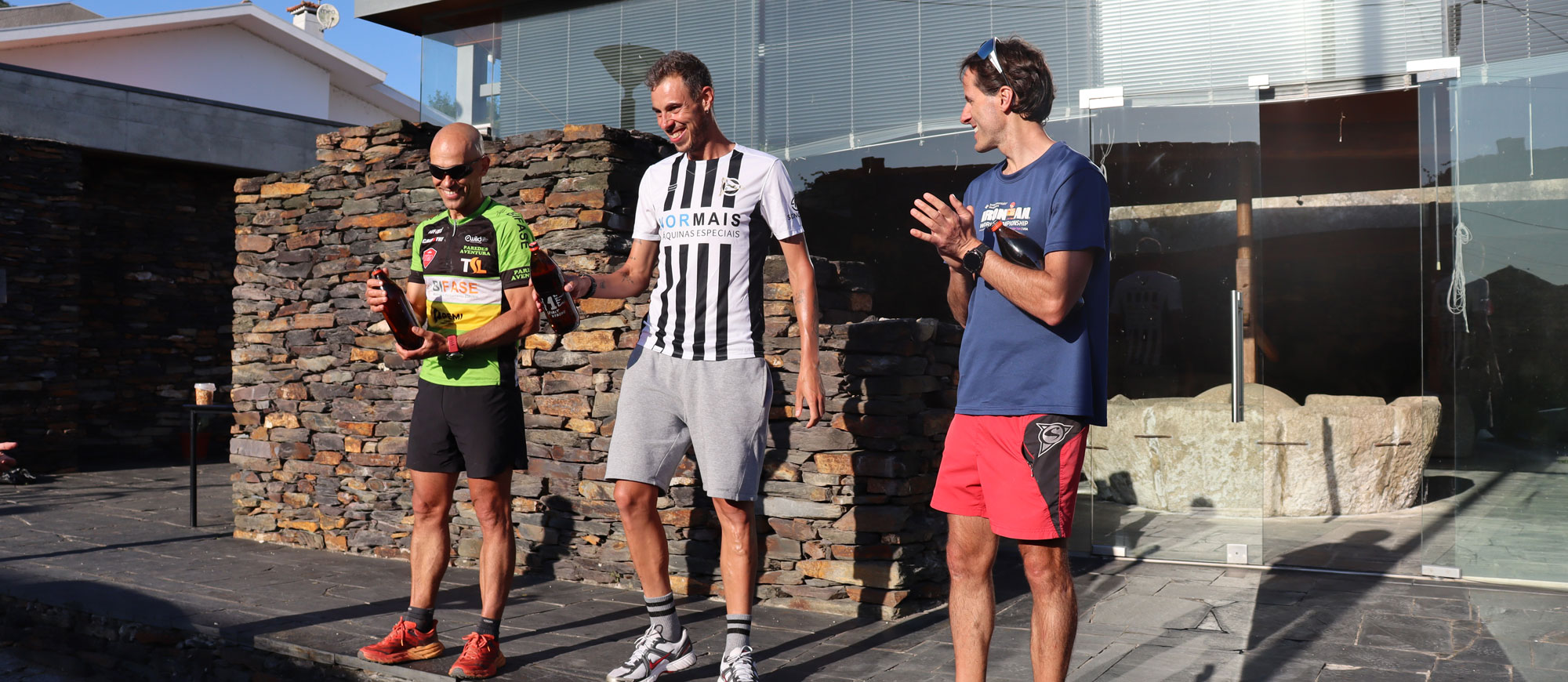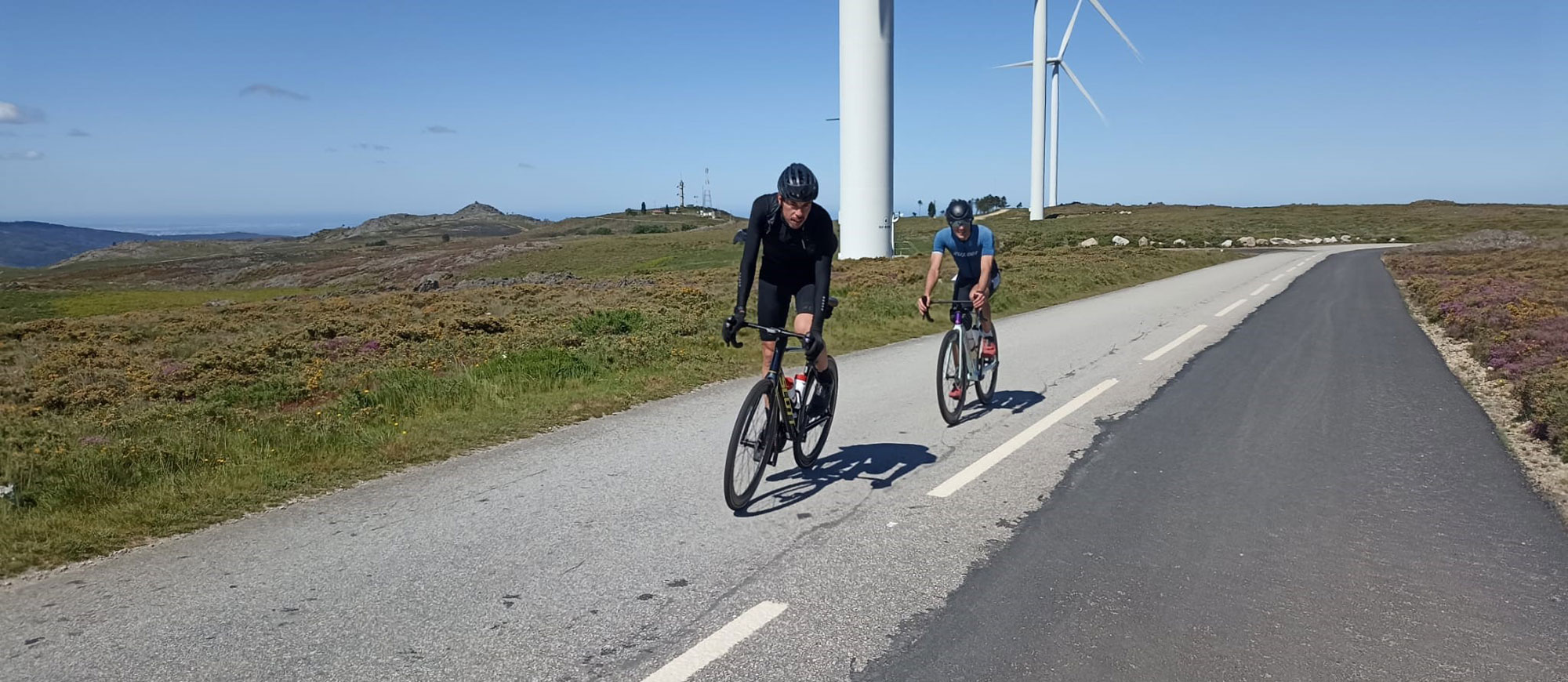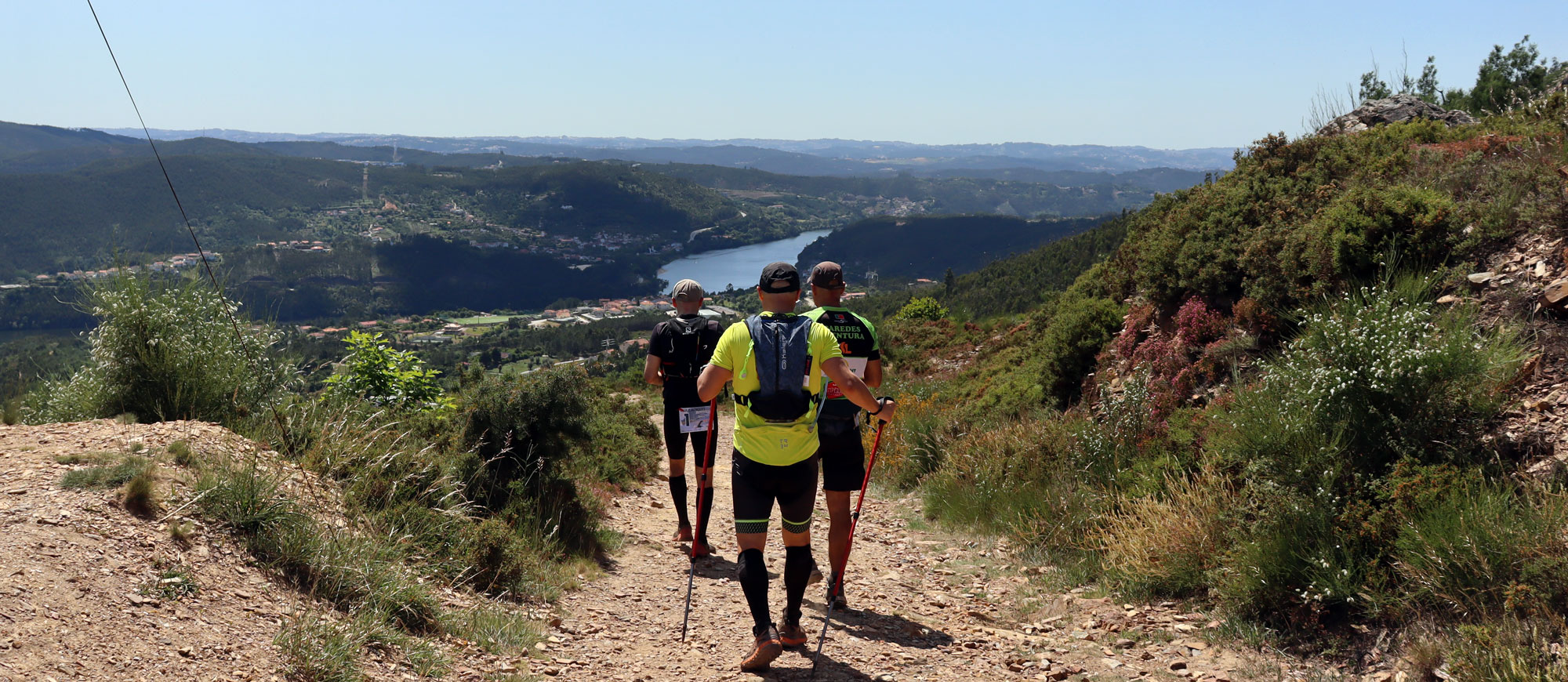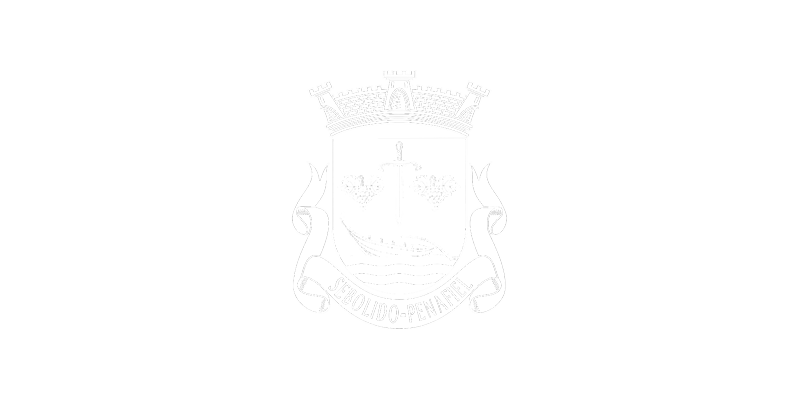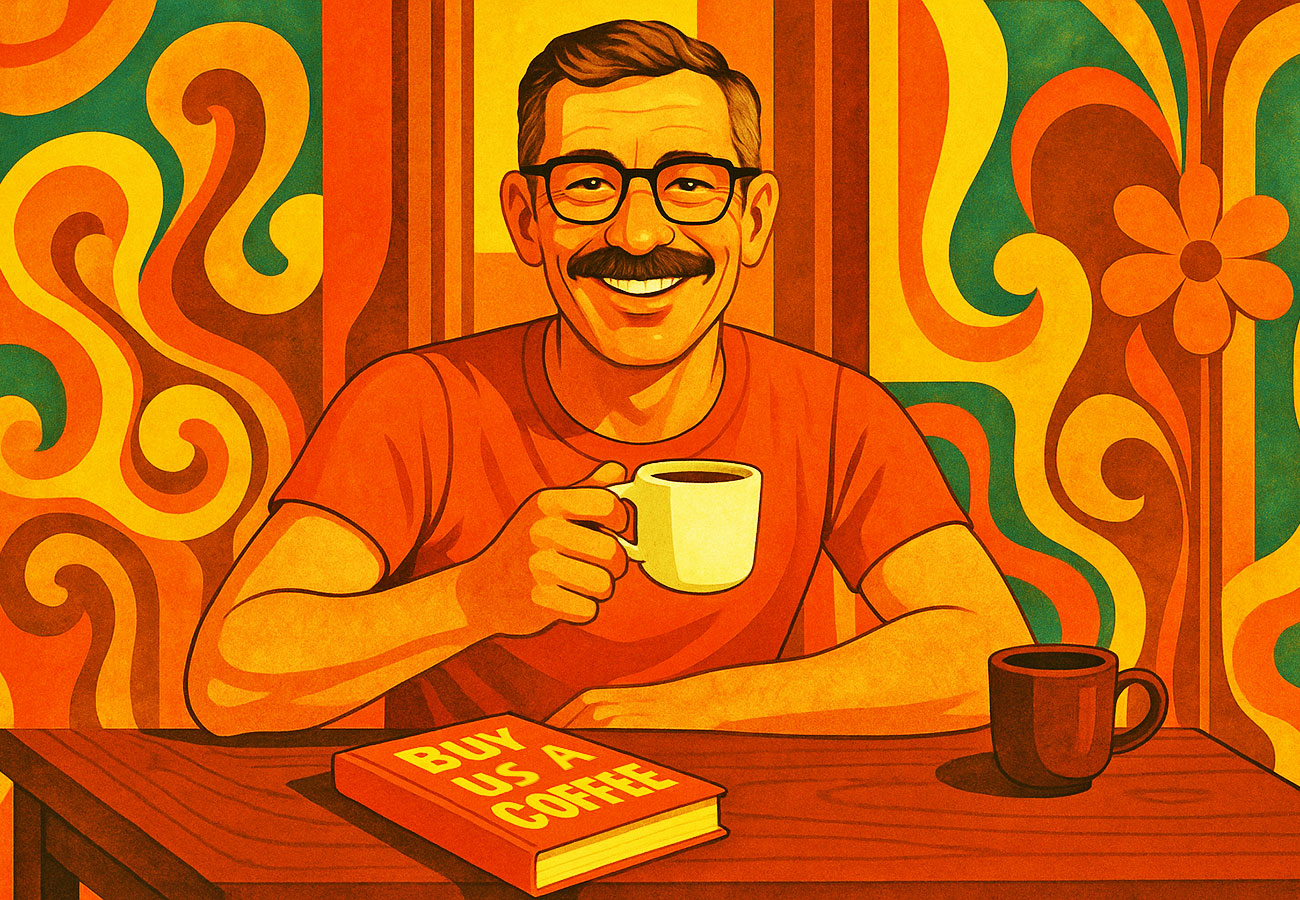When doing a 4km swim, 180km on a steel bike and running a marathon in speedos and tops starts to not be enough, someone remembers to do something completely different.
Why not organize a triathlon that can take athletes closer to their limits? A race with the distances as needed but with an ascent accumulation that would make the athletes want to abandon the race in the middle and go home and put their legs up. A race that would decide who would be crowned with the title of The Strongest Man on Earth.
Swimming had to be done in the Douro River, and it would have to be a flat swim, or so to speak, without any flow. The chosen location was the Crestuma Dam, departing from one of the existing docks on spot. The distance, 2 km, to be done in a circuit, in a single turn.
For the bicycle, the choice of where the athletes would have to go turned out to be easy. It was enough to open a map, and Serra da Freita immediately stood out as the highest point nearby. With its 1100m of altitude, not being very high, it turns out to be one of the highest points in Portugal. To get there, the athletes would have to, in a first phase, travel a part of one of the mythical Portuguese roads, the national N222. One of the disadvantages of this road is that it has some traffic, so it was decided to change to a more secondary road as soon as it was possible. One was chosen that goes through the middle of a forested area to city of Arouca, at the base of Serra da Freita. The athletes would have to go to the top of the Serra and go down using the same road. From here they would have to follow again towards the Douro River, towards Entre-os-Rios, ending up in the village of Sebolido, with a total of 120km with a positive accumulated of 2300m.
Athletes would have to complete the cycling route in autonomy. It was advised to have a support car, those who did take one, would be at their own risk. They would have to navigate through the routes previously provided. There would be a single intermediate control point, at the top of Serra da Freita.
The run would also have to be tough, and nothing better than a trail run to solve the situation. After studying several scenarios and alternatives, it was decided that it would use a route that did not require any marking. In Sebolido the ideal situation was found, there is a footpath with 9km or so, the PR5, which passes along the river and goes up to the windmills, at the top of the mountain, guaranteeing 500m of ascent. Being an official route, the markings are clearly visible and are sufficient for good orientation. The athletes would have to complete 2 laps of the PR5 and finish with more that 19km and 1000m of climb. As this makes an 8, we placed the transition in the middle of the circuit, meaning that the athletes had to pass through this area 3 times, with the possibility of refuelling every 4/5 km.
With the routes defined, invitations were sent to some athletes, handpicked, to be the guinea pigs of this adventure. We opted for athletes who had already proven themselves in the Spirit of 78 Triathlon and who always showed they had the spirit, resilience and the right dose of craziness to go along with what we had prepared.
And the 13th of May arrived. At 6 am, the 15 athletes who presented themselves in the race begin to arrive. Not a single cloud can be seen in the sky, everything points to be a good day for the practice of triathlon, if it weren't for the cold that was felt, but being an xtreme race after all, it wouldn't be anything that would disturb the athletes. In reality it was just a small setback, the water temperature contrasted with the outside and was a pleasant 18 degrees.
After a short briefing, the race started. Soon athletes began to stretch across the water surface, after all the lack of flows enhances the swimming level of the athletes. At the return point, Pedro Magalhães leads the race, being passed close to the exit of the water. Paulo Costa was the first out of the water after 34 minutes, with Pedro at his feet. The third turns out to be Tiago Amaral.
A little curiosity about this initial phase of the race. One of the athletes, António Ferreira, did not wake up in time, arrived at the place very late and started swimming when the first ones left the water. The resilience shown is to be commended, even with more than half an hour of delay he decides to show up and start the race.
In cycling, athletes have no rest and after km 2 they start to climb. And it was between the ups and downs that the athletes kept on pedaling, with Magalhães leading the way in cycling. On the descent to Pedorido, on the N222, Valter Nogueira moves into second position.
Arriving at Pedorido, the athletes are presented with the Douro River on their left side and on the other bank they have a glimpse of what awaits them later in the race, Serra da Boneca with its wind turbines at the top.
This is where they leave the N222, turning right. The cut to the right had not yet been made and the look could already guess what was coming, a ramp with more than 10% inclination for about 2km. This ramp took the athletes to a mountain road, with the road surface in very good condition, beautiful landscapes and almost no vehicles. It is on this road that João Sousa, who was one of the last to leave the water, in a fantastic recovery overtakes the pursuers of the first places and places himself in third position.
Finally, the arrival at the base of Serra da Freita. The race has a group of 3 athletes in front, followed by another with 4 athletes further back. The next 12km would be the ones that would define everything. With almost 10% of average slope, this is where many would leave their legs. From this point it would be every man for himself. And so it was, at the top control point, they arrived one by one, with well-defined positions.
If the ascent is very hard, the descent is still bad, the poor condition of the road surface associated with the slope, means that they have to do it with a lot of trepidation and very slowly. From here until the end of the cycle, the legs are not spared and the ups and downs are maintained until the end.
It's almost one o’clock in the afternoon when the first two athletes reach the transition. At this time the sun shines very high and the heat is felt, from here you can see the upper part of Serra da Boneca, an arid area, with steep trails that snakes up the hillside to the top. Everything indicates that things are not going to get any easier from here, on the contrary, it is expected to be a painful afternoon.
All athletes manage to complete the first two segments until the end, but the climb to Serra da Freita ends up being the executioner of 2 athletes, who end their adventure, not getting to wear their trail shoes. There are 13 athletes left wanting to climb the trails to the finish line.
The run starts towards the river, it's the easiest part, it's about 4 km relatively rolling and with plenty of shade. But the legs at this point no longer cooperate as they should and this part ends up having to be done very slowly. The paths take us back to the transition zone, where athletes take the opportunity to fuel up and refresh.
This is where the difficulty of the race begins, a fairly technical ascent, which takes athletes from 100m to 600m, the sun never lets up and there are practically no shades to alleviate the effort that has to be made. At the top, the mountain does not give a rest, the trails are narrow with a lot of stones, which make progress difficult. The descent ends up having a short part that is a little more rolling, taking the athletes back to the transition zone.
We are in the middle of the race, at this point João is already in the lead, being followed by António Moreira and Valter, those two fighting for 2nd place. The second lap ends up not bringing any changes and the positions of the first ones end up remaining unchanged until the end. João Sousa takes home the title of The Strongest Man on Earth, António Moreira takes second place and Valter Nogueira takes the last place on the podium.
As tradition dictates at the Spirit of 78 Triathlon, everyone waited for the last athlete to cross the finishing line to proceed with the award ceremony.
The general feeling among the athletes at the end was one of satisfaction and accomplishment. Everyone found the race very hard, but did not change anything that was proposed to them. They ended up returning home with severe pain in their legs.
The final classification was as follows:
1st - João Sousa - 8:20:15
2nd - António Moreira - 8:39:20
3rd - Valter Nogueira - 8:57:15
4th - Paulo Costa - 9:0:0
5th - Tiago Amaral - 9:25:0
6th - António Ferreira - 9:26:10
7th - Luís Saleiro - 9:33:10
8th - Jorge Rodrigues - 9:35:5
9th - Pedro Magalhães - 9:49:50
10th - Paulo Marques - 10:8:0
10th - Joaquim Ramos - 10:8:0
10th - Rui Moreira - 10:8:0
13th - Alcino Oliveira - 11:36:15
DNF - José Monteiro
DNF - Carlos Canito
DNS - Pedro Ribeiro
DNS - Sérgio Suzano
DNS - Rui Amorim
DNS - Carlos Gomes Ferreira


